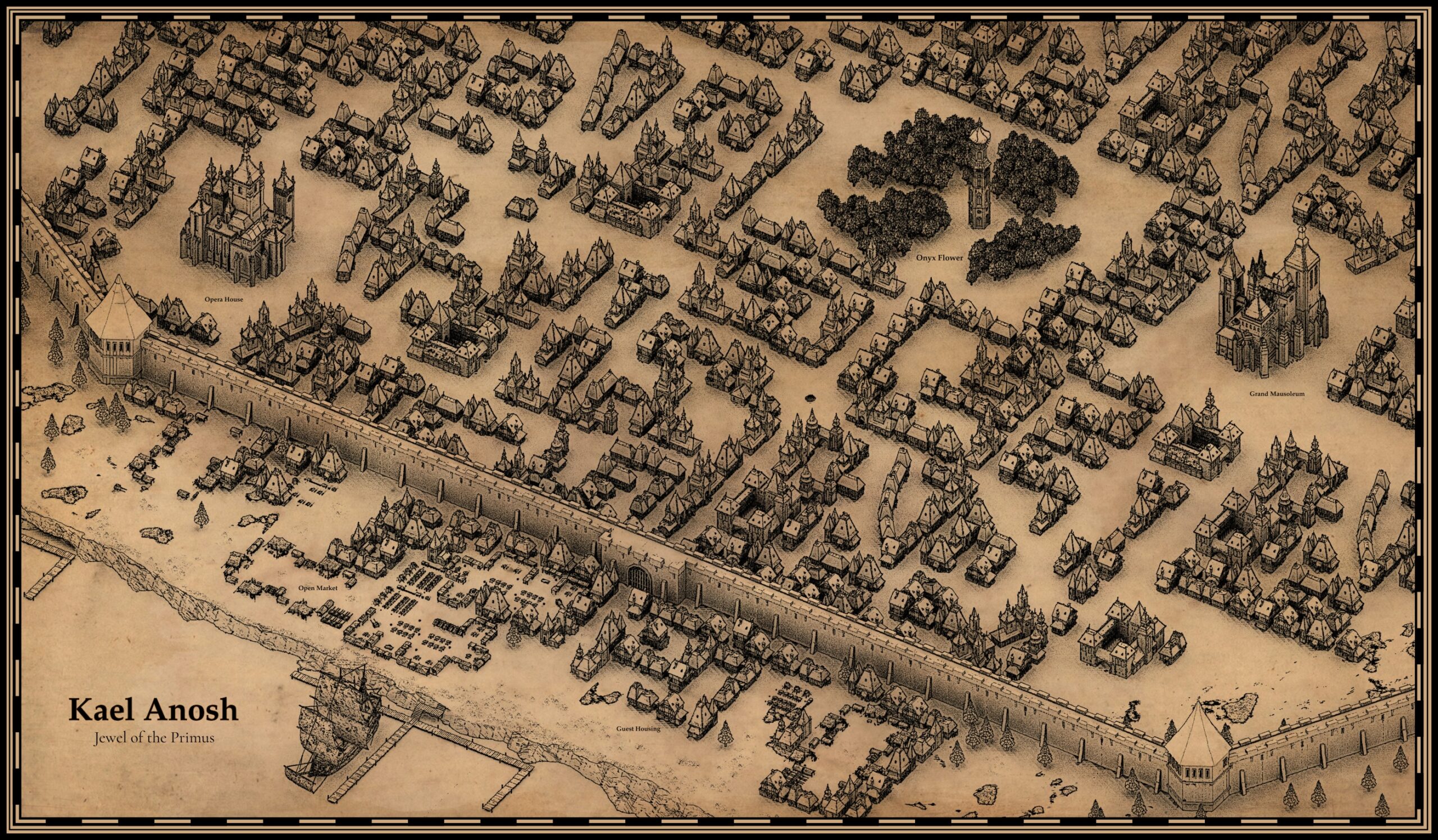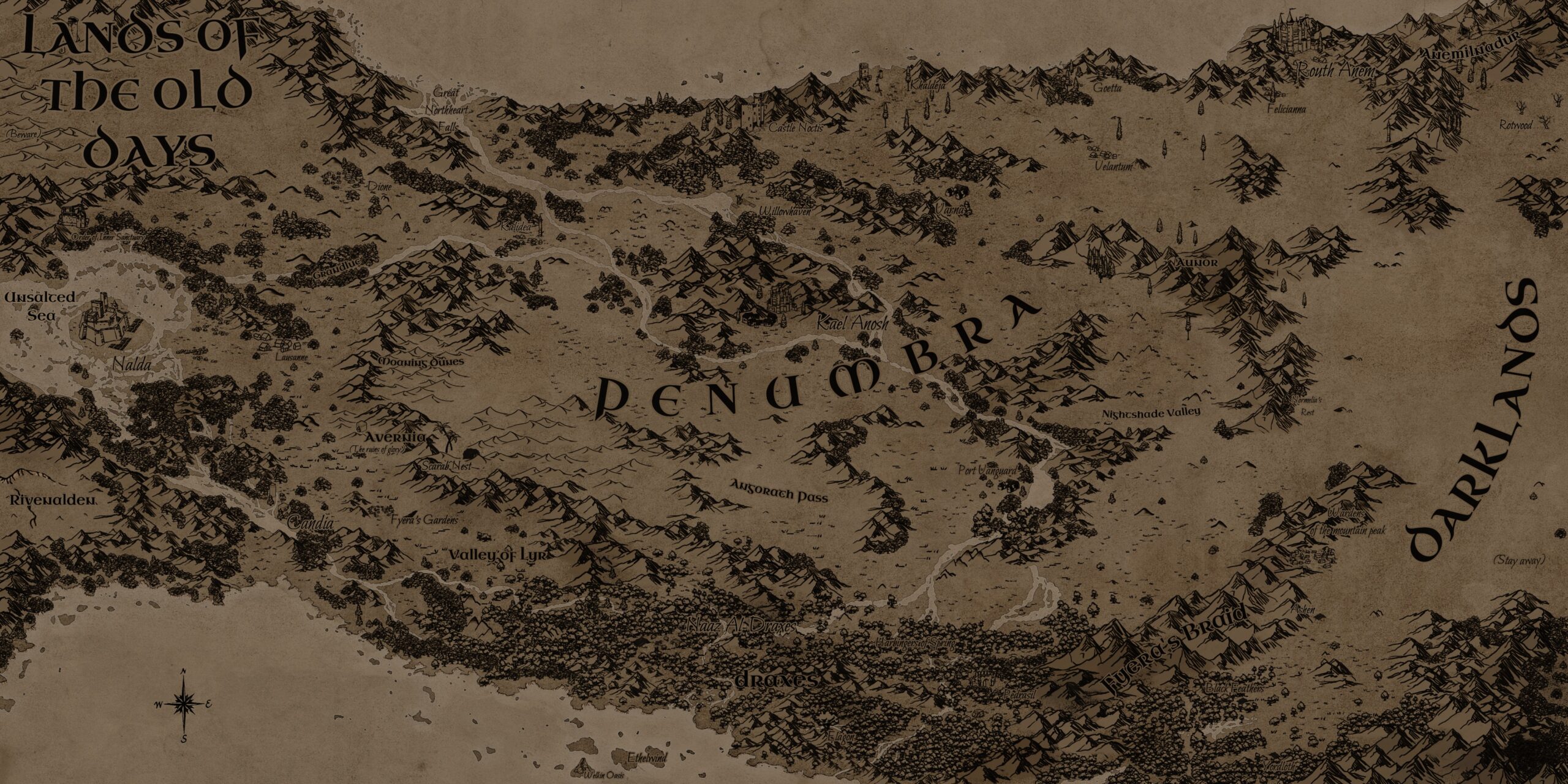Another map for Soulmist. This is for the city of the vampiric race ‘Primus’. The Primus have established three major cities on the continent but Kael Anosh is the only city that the Primus allow to interacts with other races—and only at their discretion. Once per year, as the tides shift, the city briefly transforms into a bustling trade hub. During this time, other races are permitted to establish a marketplace outside the city walls, provided they respect its strict laws. To accommodate visiting merchants, the Primus have built guest housing, also outside the walls, which can be rented for the duration of their stay.
Inside the city, three key locations define its identity:
- The Onyx Flower – The only academy of blood magic in Kael Anosh and the most important institution in the city.
- The Disc of Ascension – A grand theater and opera stage, serving as the cultural heart of the Primus.
- The Mausoleum – A sacred site where the Primus venerate their sleeping or departed elders.
The Challenges of Mapping Kael Anosh
Creating this map required an extensive number of assets to accurately depict the city’s intricate layout while maintaining visual diversity. To avoid repetitive patterns, I designed six different common buildings for most of the city and three distinct structures for the noble families. The rest such as the Onyx Flower are unique assets. Each of these was carefully placed by hand.
Beyond the residential areas, additional assets were needed to illustrate the market, city walls, docks, ships, natural rock formations, and other details. As the project progressed, the required level of detail shifted—each asset became smaller on the canvas, yet many retained a higher level of intricacy than was ultimately necessary.
The Process
The assets were modeled in Blender and rendered in an isometric view using a simple ambient occlusion shader. The renders were then imported into Krita, where they were drawn over and gradually refined to achieve the final visual style. The decorative borders were created using Inkscape.

